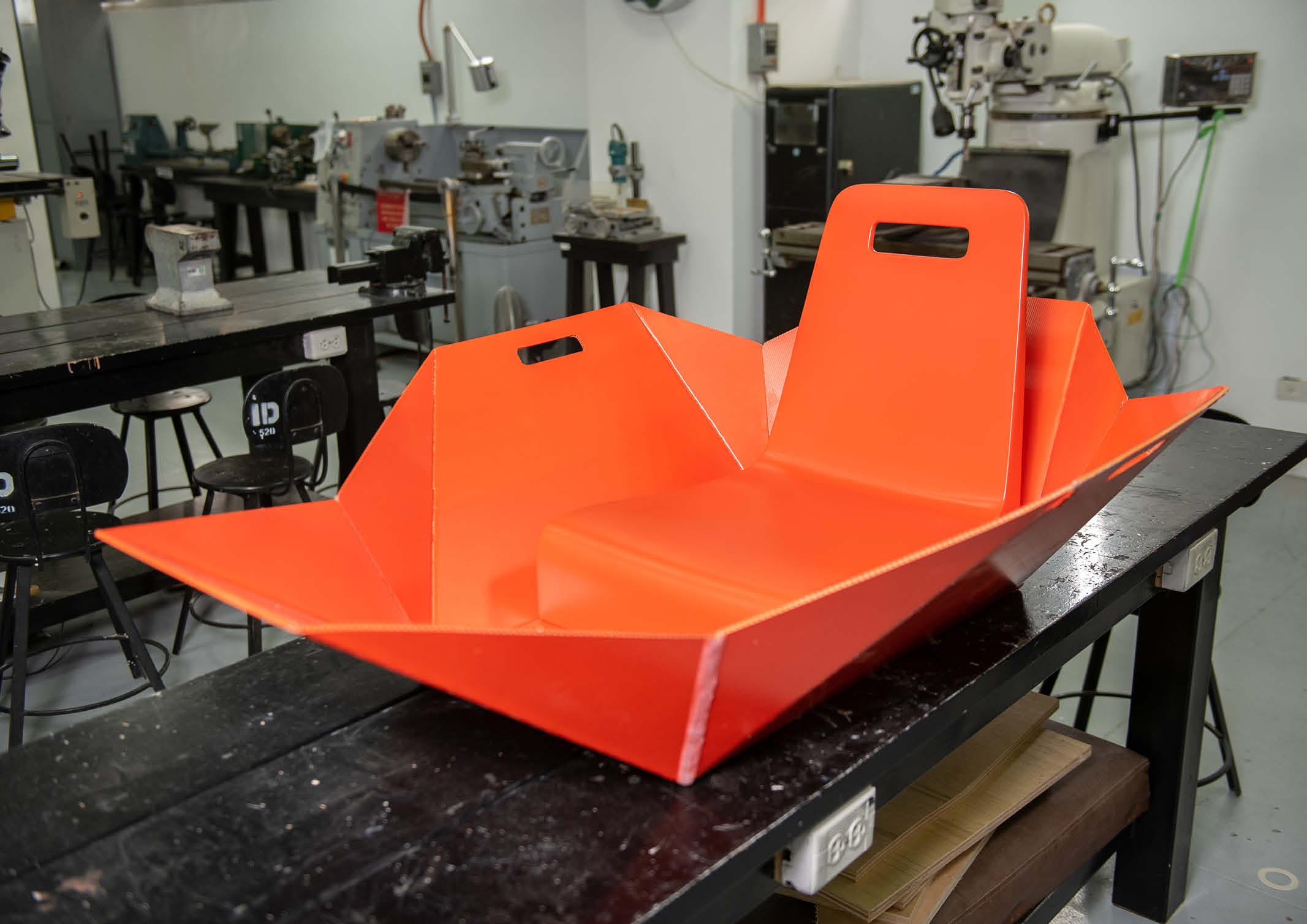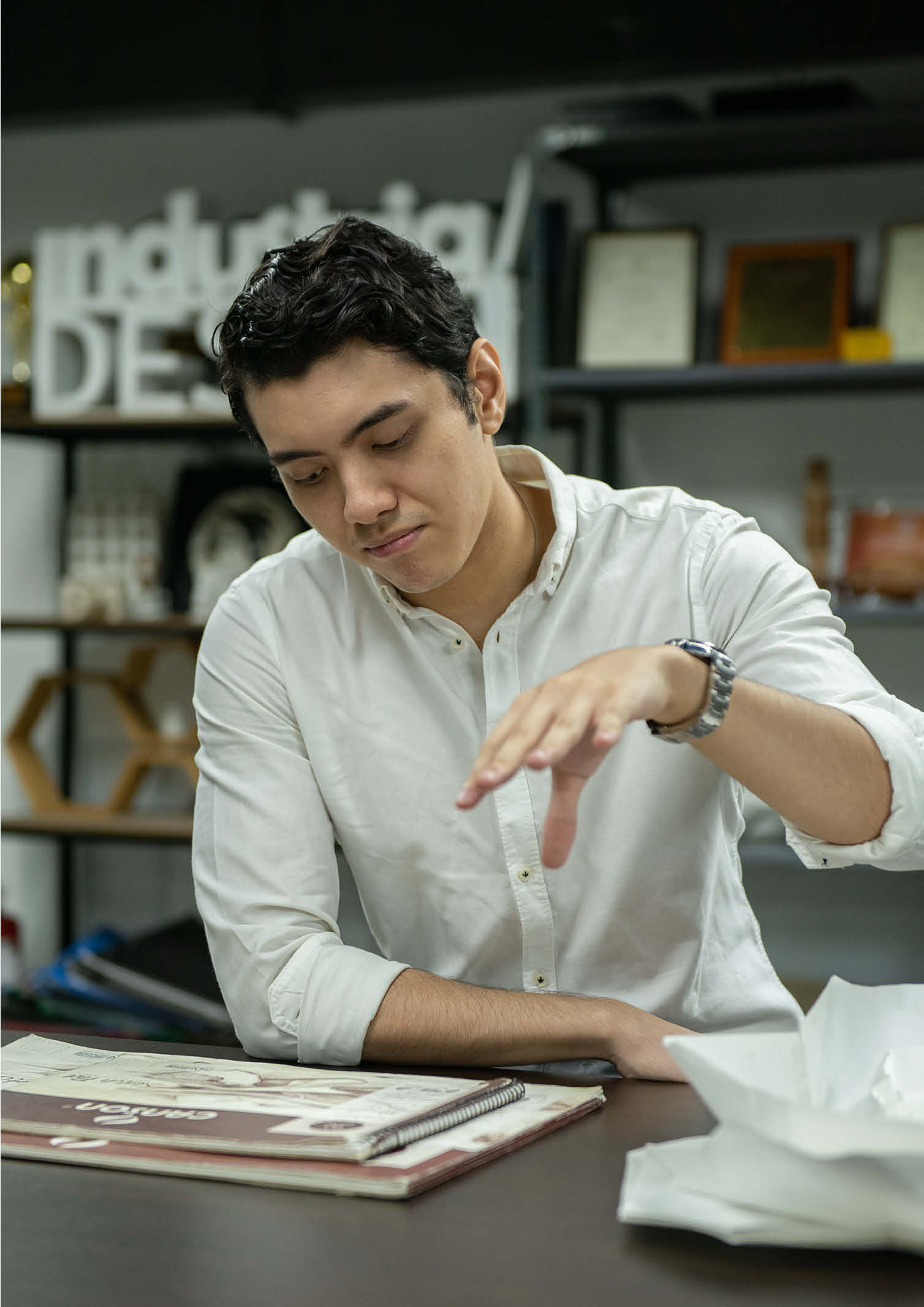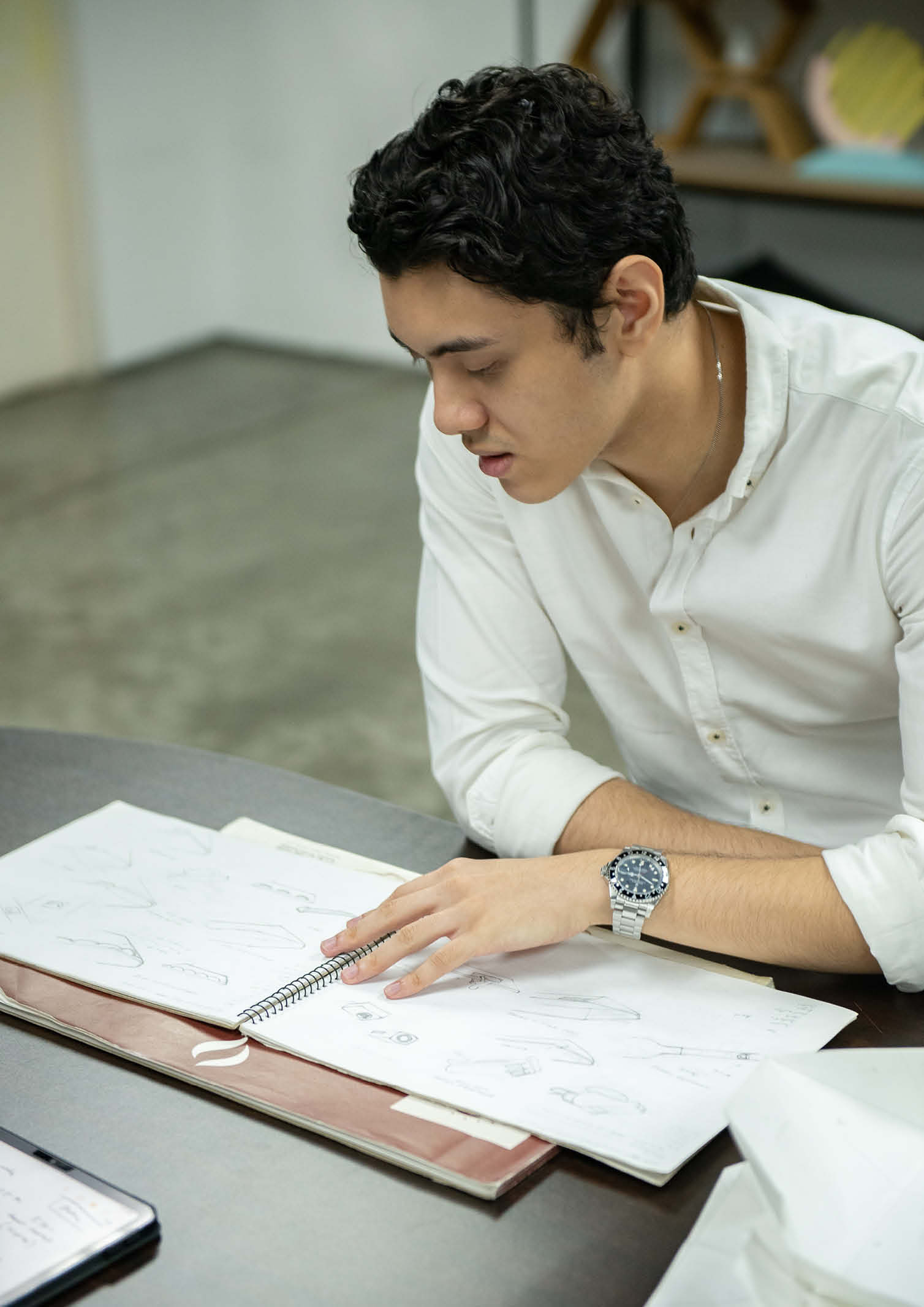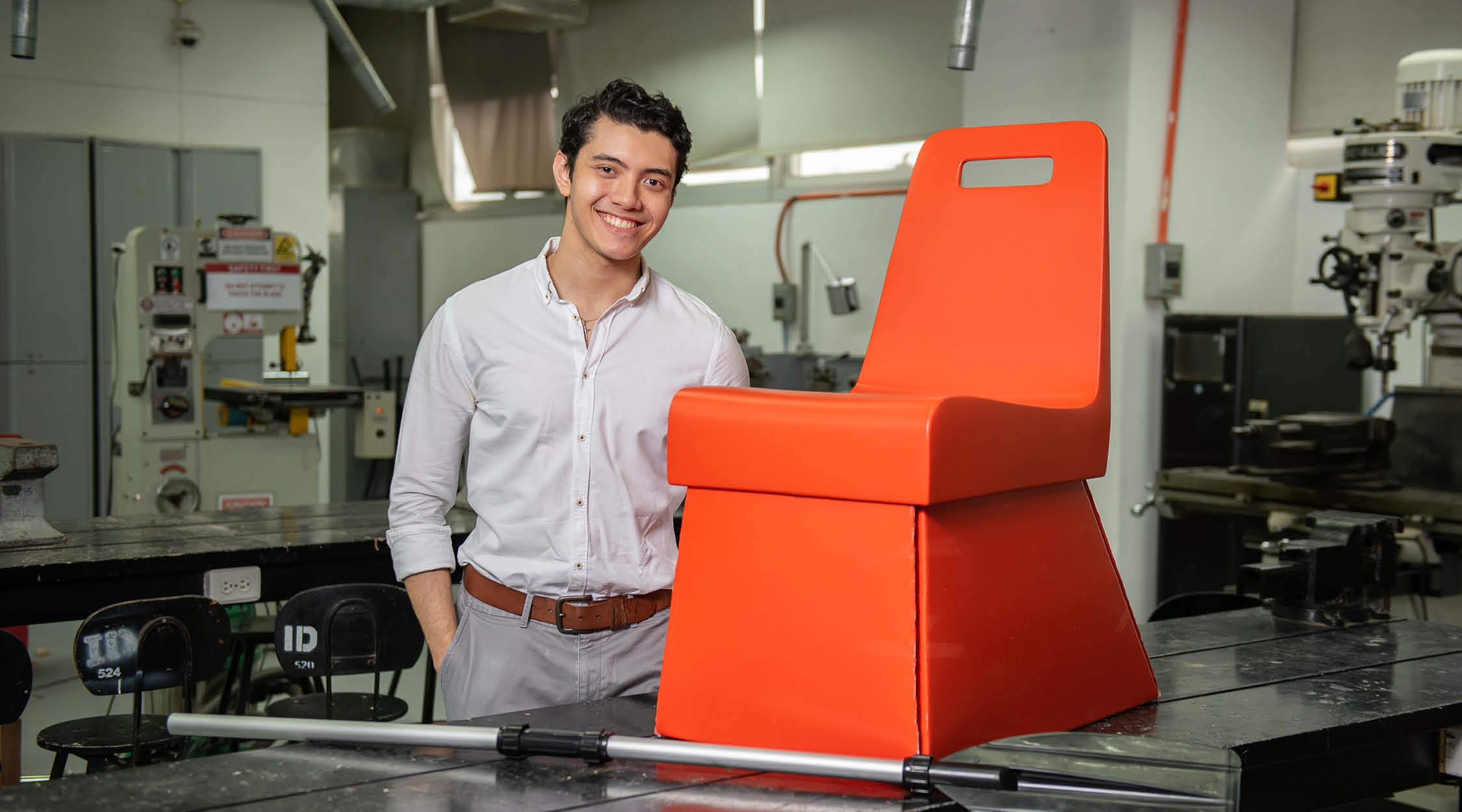
NOAH: A Chair That Transforms Into An Emergency Life Raft
Fundamental to Industrial Design is the problem-solving process that drives innovation. At its core, the intent is to create products that lead to a better quality life – bridging the gap between new ideas and real-world solutions.
This is what Aleksander Wieneke, Industrial Design alumnus from De La Salle-College of Saint Benilde, had in mind when he crafted Project: NOAH, a multi-purpose chair that transforms into an emergency life raft in the event of flooding.

What started as an undergraduate capstone project, NOAH was inspired by Alek’s simple intent to create something that could help people. In an exclusive interview with BluPrint, Alek recalls the inspiration behind the project. “Ever since I was a kid, flooding has been a problem in our country. And it still remains to be one. After so many years, we still struggle as a country.”
After conducting surveys with calamity victims and emergency professionals, he found out that low to middle income households were the most affected, more so because they do not have their own emergency equipment. Existing products in the market are either inaccessible or expensive. With products such as flood bags and barriers, it can be intrusive, in a way that it does not go well inside a house. And In most cases when flood water overflows, it can become ineffective.
For such reasons, Alek wanted to get away from the typical solution of blocking the flood and instead create something that people can use – and empower them. He thought “What if something that people [already] have in their homes can become something that could be life-saving, something that they could use for floods, so that they don’t have to spend more.”
Alek was already motivated to apply for the James Dyson Award, an annual design competition that recognizes innovative projects and young designers with a passion for changing the world. “I had the James Dyson competition in mind, so at the beginning of my project, I was already thinking if it would be good enough for the award. It was one of my biggest worries. But soon after I started working on it, I wasn’t anymore thinking about the award. My only thought was – will this work. Which is a good thing, because that’s how you’re supposed to think. You’re not thinking of designing for an award, but for the users.”
After completing the project for a year, NOAH was awarded as one of the Best Theses in his batch, followed by his nomination as the National Runner Up of the James Dyson Award. “I got a call asking some details about my project and if I still had the prototype. It was only at the end of the call i was told that I got the nomination. I was really surprised.” Alek recalls.
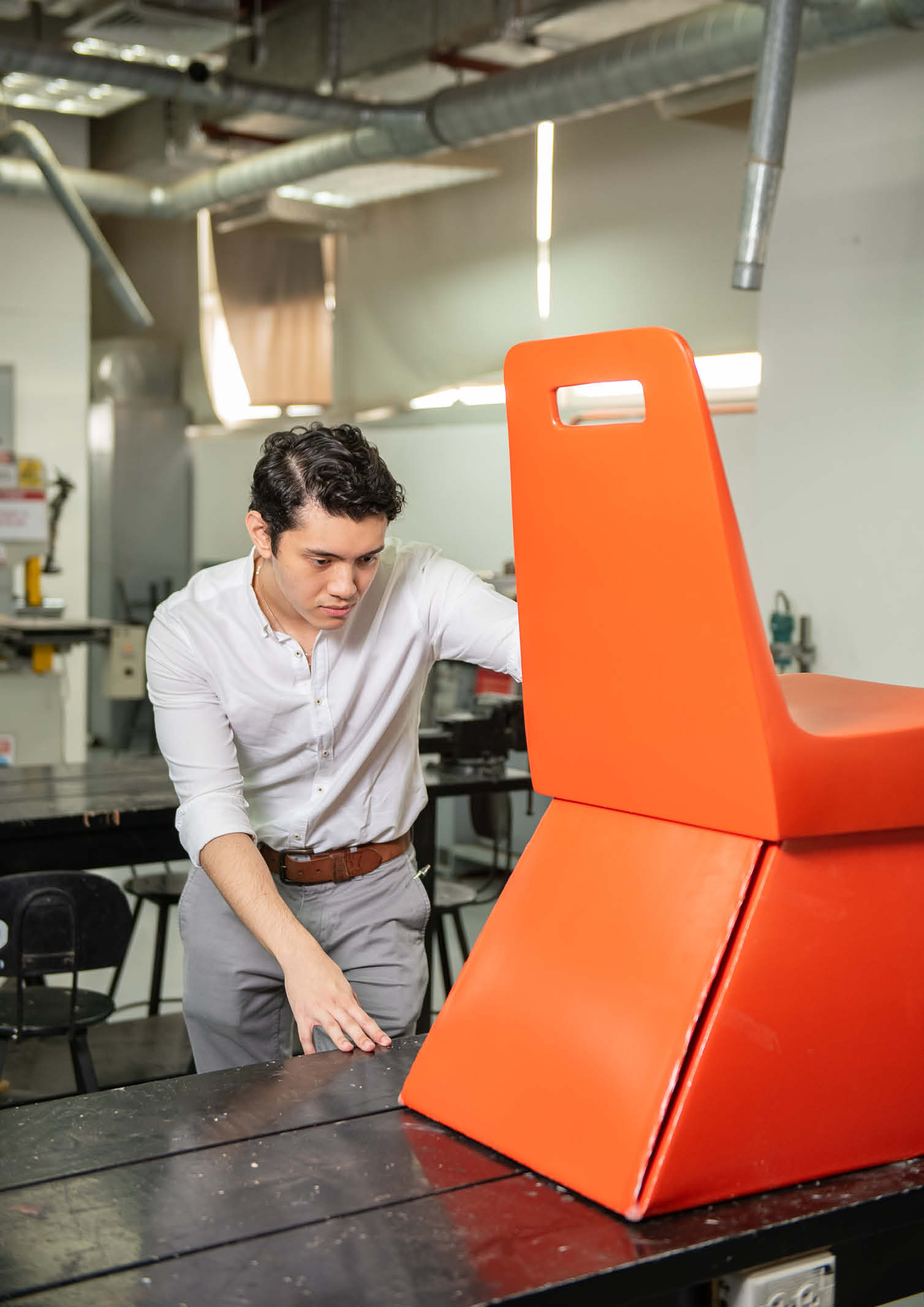

The Design Process
For Alek, the most integral aspect of the design is how it works. Because of this, the Conceptualization Process was where he spent most time on. He defined Design Parameters that would guide him into creating the most feasible solution. These are Form, Function, Aesthetics, Materials, Production and Manufacturing, Ergonomics, Environmental Considerations, and Business and Marketing.
He explored on the modularity and transformability of the object, taking inspiration from the folding techniques of origami. Taking into consideration that not everyone can easily understand how most devices work, Alek wanted the design to be as intuitive as possible so that anyone can use it. For the mechanism, he wanted to keep it at minimal, especially for emergencies where quick setup is integral. Features such as reflective tapes that add visual perceptibility for rescuers and hand grips that can be used to tie rescue cords or to link rafts, add onto the simple but clever design of the raft.

The first idea was actually to use larger objects such as a table or a couch because his first thought was to accommodate and save as many people as possible. Upon several consultations, he realized that not all houses can accommodate big pieces of furniture.
He further explored different concepts, simultaneously producing sketches and scale models. He was able to produce 25 design iterations where each is evaluated using the design parameters set at the beginning of the project. After several tests, he finally narrowed it down to the chair, which was the very last concept he thought of. For Alek, it was the perfect solution because generally, there will be a chair for every person in the house. “So even if it’s a small piece of furniture, at least each person will have one. It is also cheaper and more portable, it can easily fit to the door”.
Moving Forward
Without a doubt, Noah is an ingenious invention for an emergency device that is affordable and easy to use, empowering Filipino households to become more proactive in disaster response.
Looking back at his experience while working on NOAH, Alek recognizes his growth as a designer, “What first got me into design was actually the aesthetics of it. When I see a nice-looking product, I would think- I want to design something like that. So in most of my projects, I would always think about how it looks, but with NOAH, I was focused on how it works. The more I study design, the more I realize that what makes good design is when it works well and is designed for the users”.
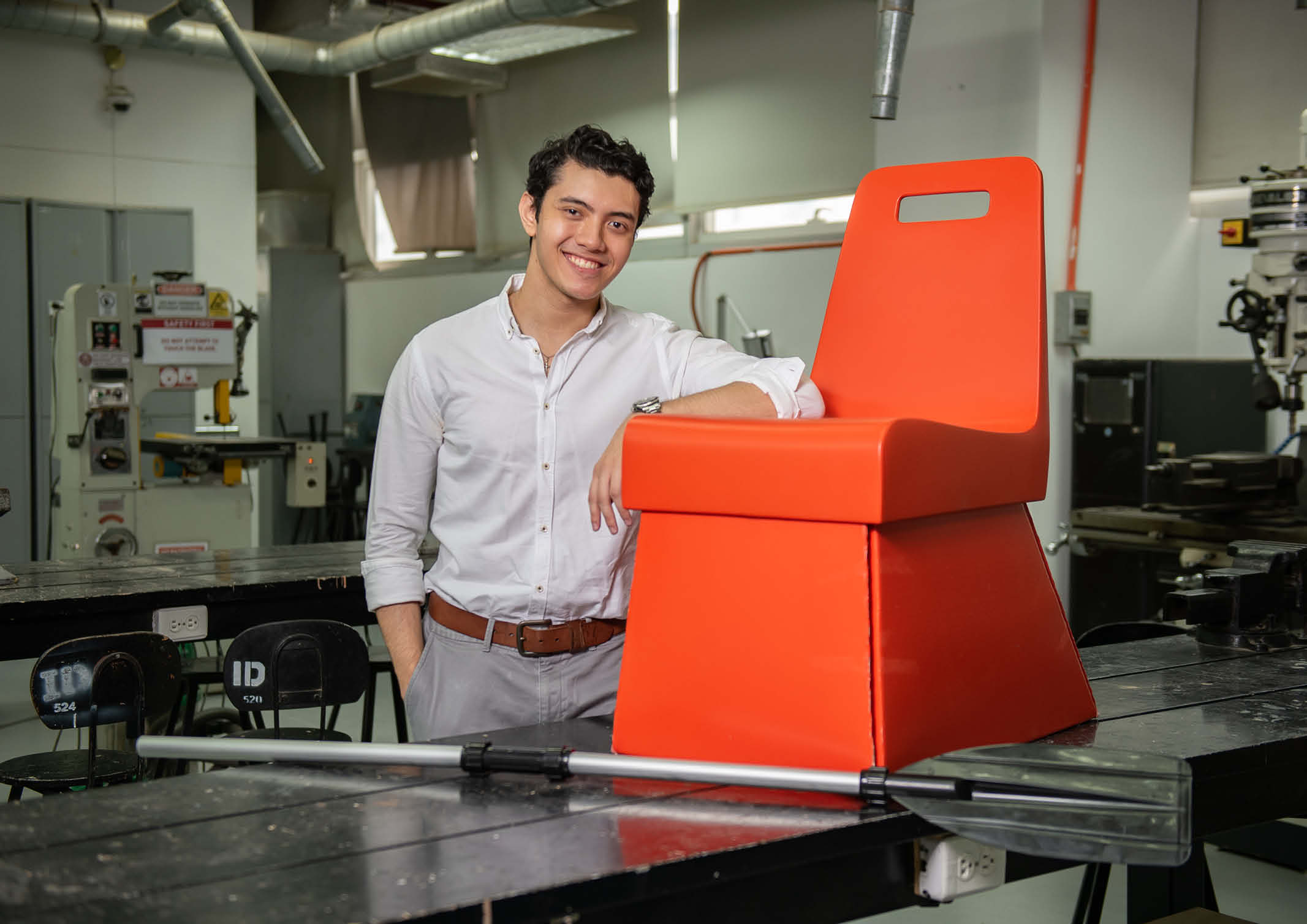
Just as there is good design there is bad design, and so being a designer, I can contribute to the effort of trying to create a better world. To me, design is creating products or systems that help make our lives easier, create meaningful experiences, or beautify our lives and make living more enjoyable. And an Industrial Designer is the one who carries these out – one who solves both today’s and tomorrow’s problems, identifies areas of improvement, and uses design, to make our lives better.
Aleksander Wieneke
Industrial Designer, James Dyson Awardee and Prototypes for Humanity Nomination
Aside from the James Dyson Award, Project NOAH was also selected as one of the participating projects for the Prototypes for Humanity 2022.
An evolution from the Global Grad Show, the Prototypes for Humanity is the most diverse assembly of innovations created by students and graduates from around the world to catalyze action for positive change and raise awareness to solve complex global issues.
Project NOAH will be exhibited at the Dubai International Financial Centre (DIFC) from November 16 to 17 2022.
Photos courtesy of Kieran Punay


